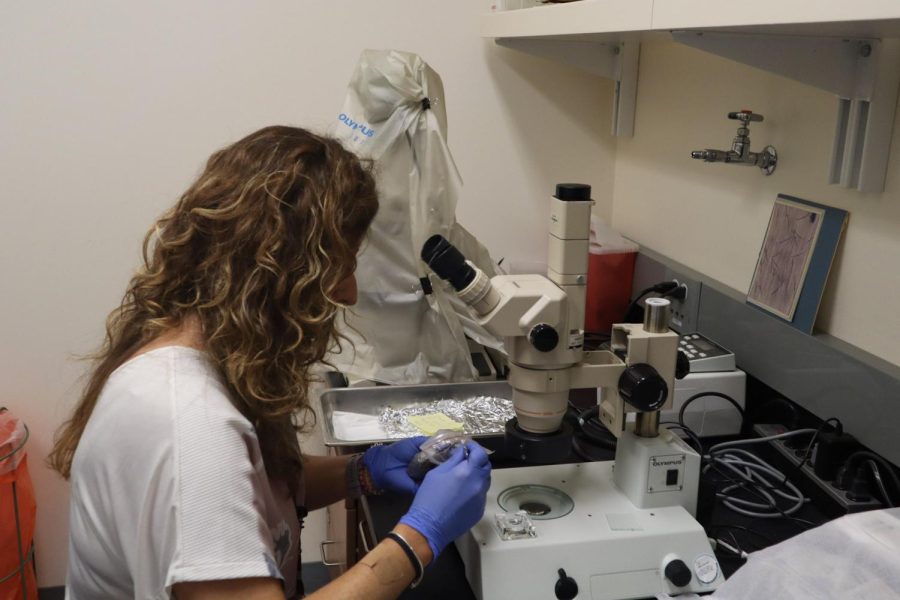Researchers study microscopic worms’ impact on agriculture
Nematodes carry bacteria that can infect seeds, livestock
Aida Duarte prepares to observe the interaction between nematodes and bacteria in the Vogel laboratory, Aug. 30.
September 2, 2022
Researchers for the Department of Plant Pathology at WSU are studying bacteria that are transmitted via parasitic nematodes, which are similar to microscopic worms.
The bacteria being studied are within the Rathayibacter genus and were collected from several locations in Idaho and Montana in order to “protect American agriculture,” said department chair Tim Murray.
One of the most prolific bacteriums in this genus is R. toxicus, a bacterium in Australia that is also transmitted by nematodes. R. toxicus produces a deadly toxin called corynetoxin, which is known for killing livestock, according to a paper Murray collaborated on.
Murray said there were anecdotal reports of livestock poisonings in the U.S. during the 1950s that resembled corynetoxin poisoning despite R. toxicus being native to Australia.
“This is one of the other things we’re looking at — could there be a toxigenic bacterium present in the U.S.?” he said.
The researchers surveyed eight bacteria related to R. toxicus in the U.S. for genes involved with producing corynetoxin, of which R. toxicus has 13, he said.
Of these eight bacteria, only R. agropyri had the genes to produce the toxin, he said.
These bacteria are transmitted via nematodes. One of the nematodes they are studying, A. sporoboliae, breeds and hatches inside of grass seeds and lives its whole life cycle in the plant, he said.
“The bacterium basically hitches a ride on the nematode. The nematode carries it into the plant, carries it into the developing seeds,” Murray said.
Seeds infected with the nematodes turn black and yellowish if they are infected with the bacterium, he said. When infected, they are called seed galls.
During the dry season, the nematode has the ability to dry out and remain dormant, a mechanism called anhydrobiosis, he said.
“When the temperature and moisture conditions are right, the seeds will rehydrate in the soil, and the nematodes come back to life,” he said.
The relationship between the nematode and the bacteria is highly specific. Not all nematodes are compatible with transmitting bacteria, said research associate Aida Duarte.
In the presence of compatible bacteria, the nematodes will clump together, a process called agglutination, Murray said.
An agglutination assay is a method of checking which nematodes will carry which bacteria, Duarte said.
In an agglutination assay, the nematodes are paired with each bacteria to find which induces agglutination, she said. They have tested about 11-12 closely related bacteria and two different nematodes to check for clumping indicative of this specific relationship.
WSU researchers are also interested in developing molecular techniques for detecting nematodes in seeds, Murray said.
Sometimes seeds exported to Asia from the western U.S. are rejected due to the presence of nematodes, even though they tested clean before being shipped, he said.
“The problem is right now, we don’t know what’s out there … and we don’t have the tools to detect them rapidly and differentiate them,” he said.
The current molecular techniques used by plant pathologists for detection and differentiation include PCR, or polymerase chain reaction, he said.
He said PCR involves isolating DNA and amplifying it using primers, which are highly specific segments of DNA that can target the desired section and initiate replication. PCR can result in many copies of the genes being studied.
The challenge with performing PCR, he said, is acquiring the right primers. Variation in genomes across species makes this difficult.
“That’s why primers may or may not work, there may be variation there that you don’t know about,” he said.










